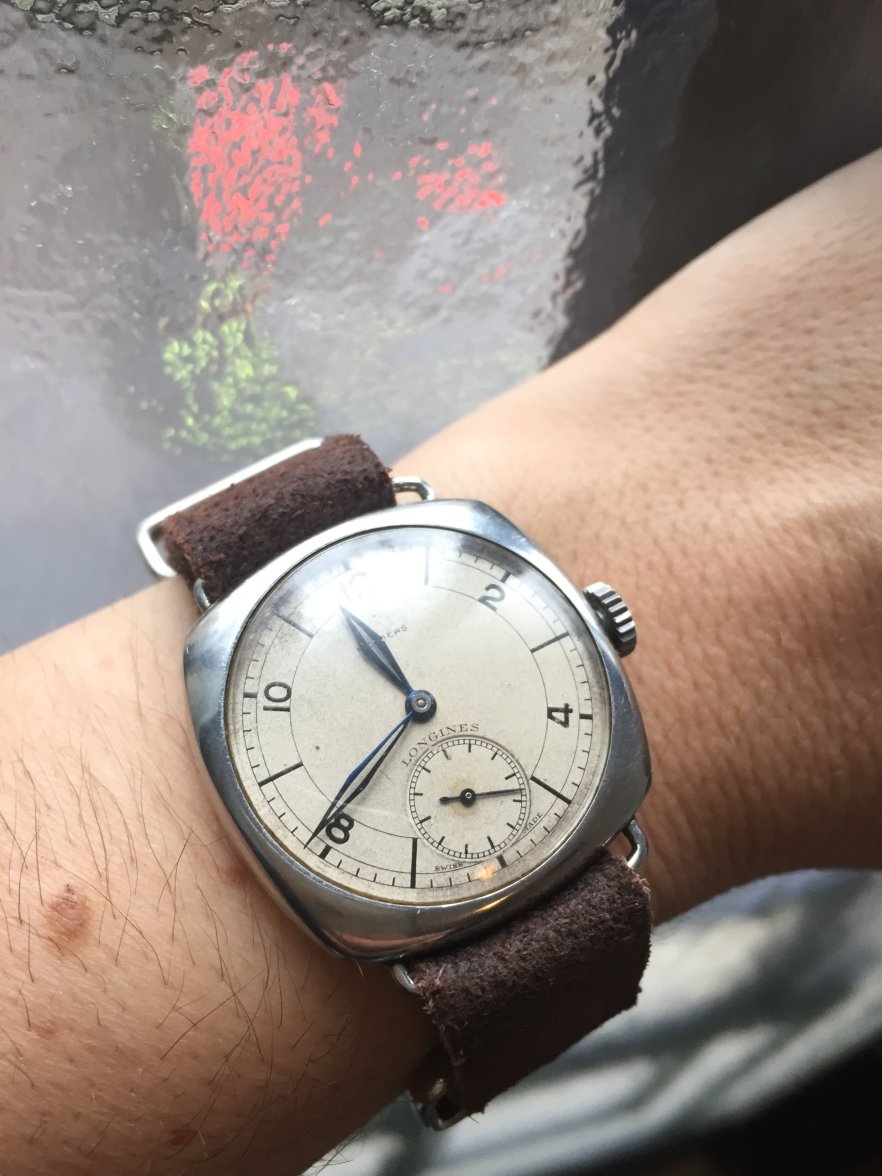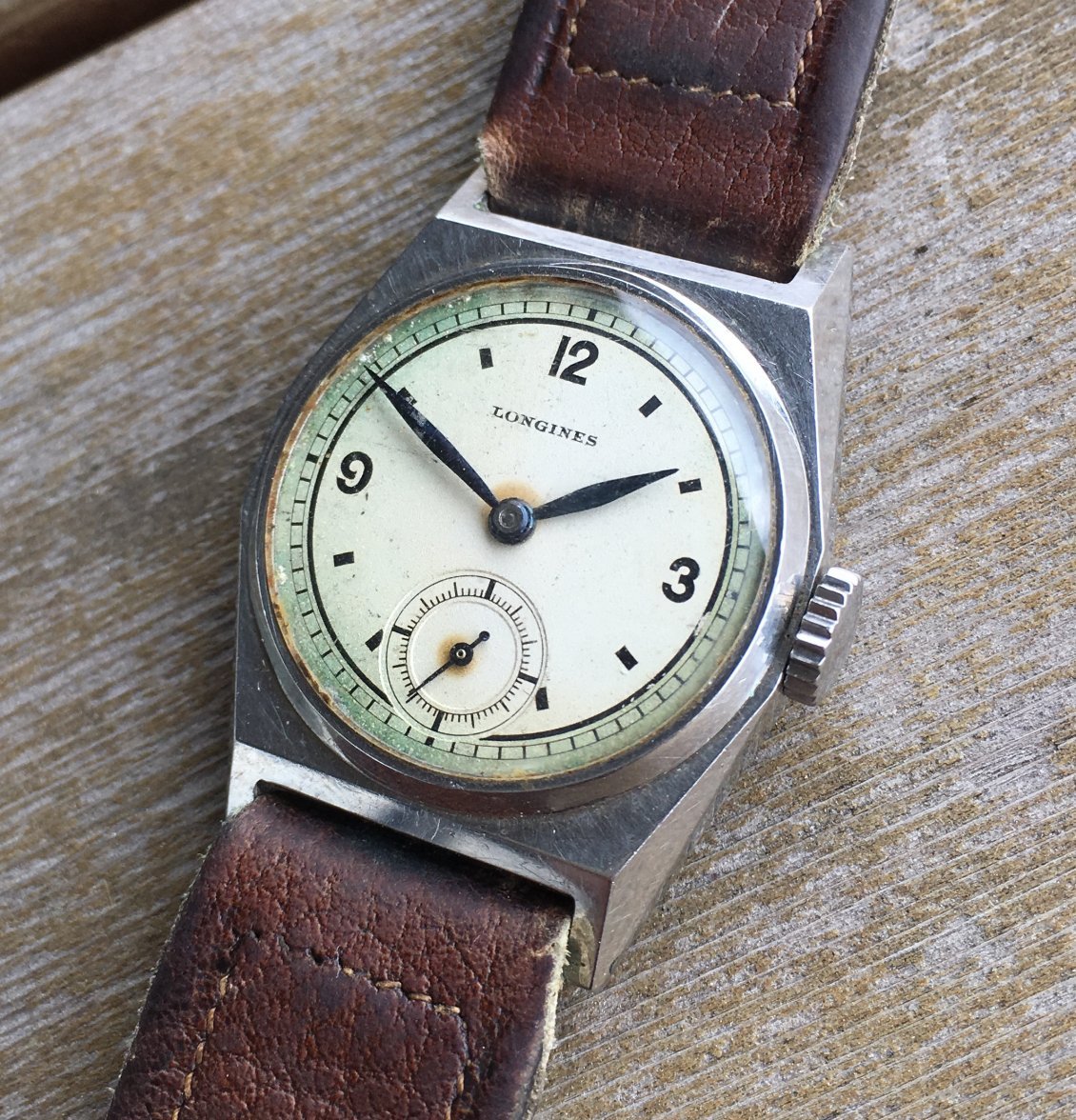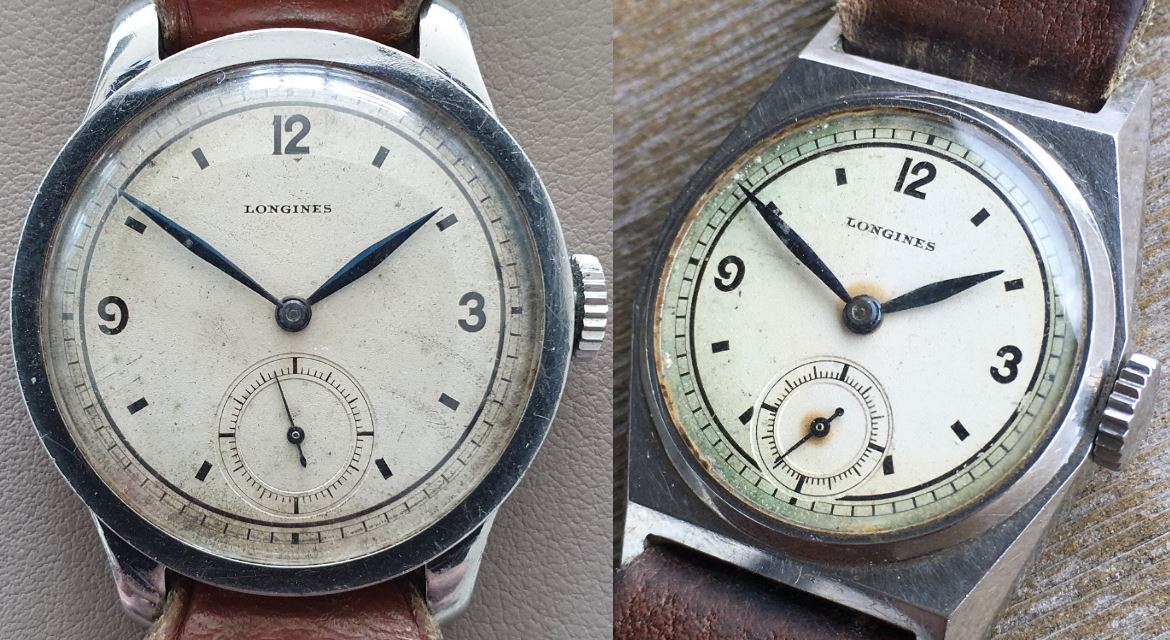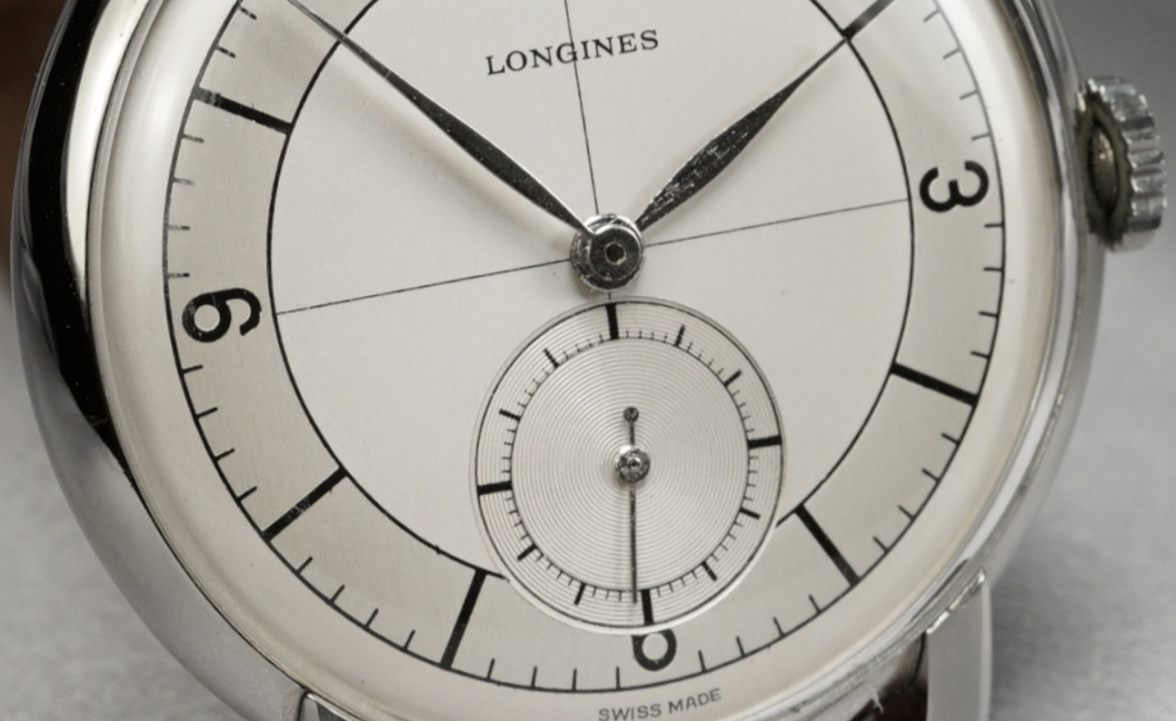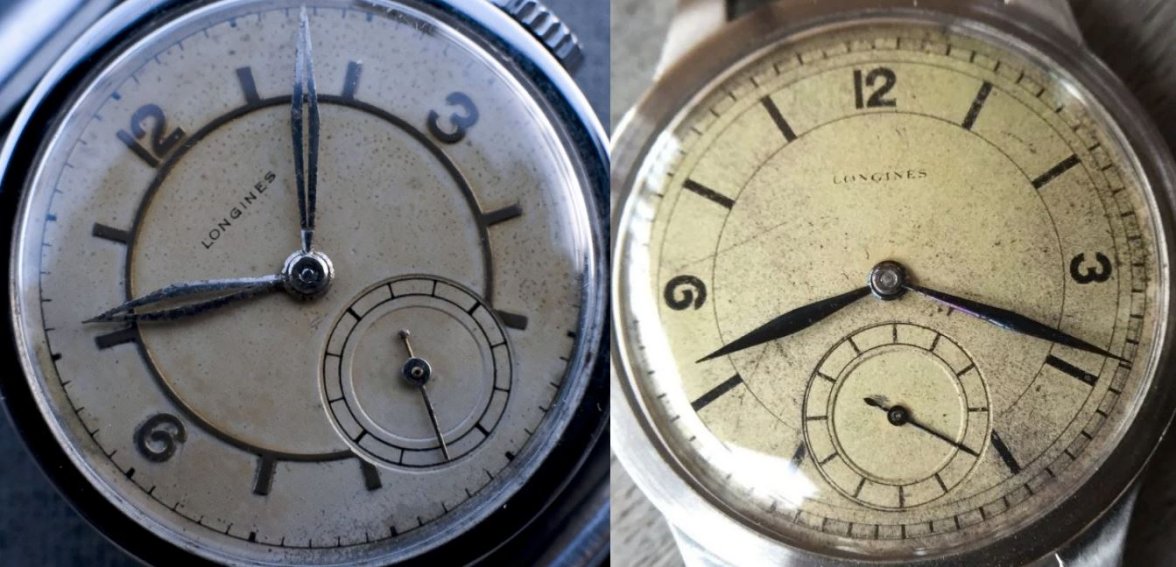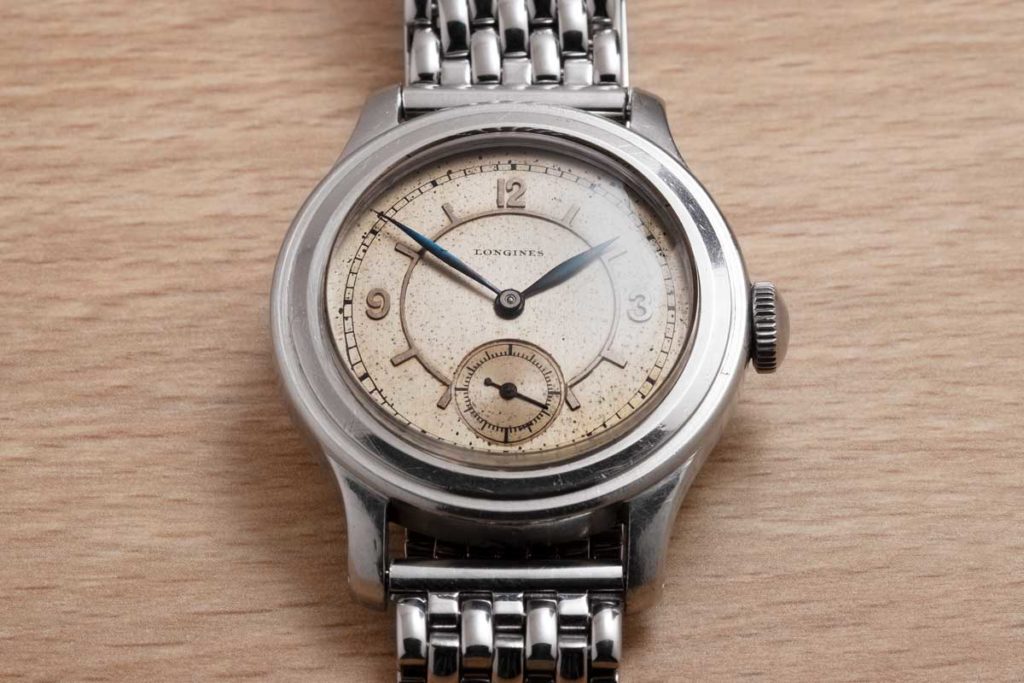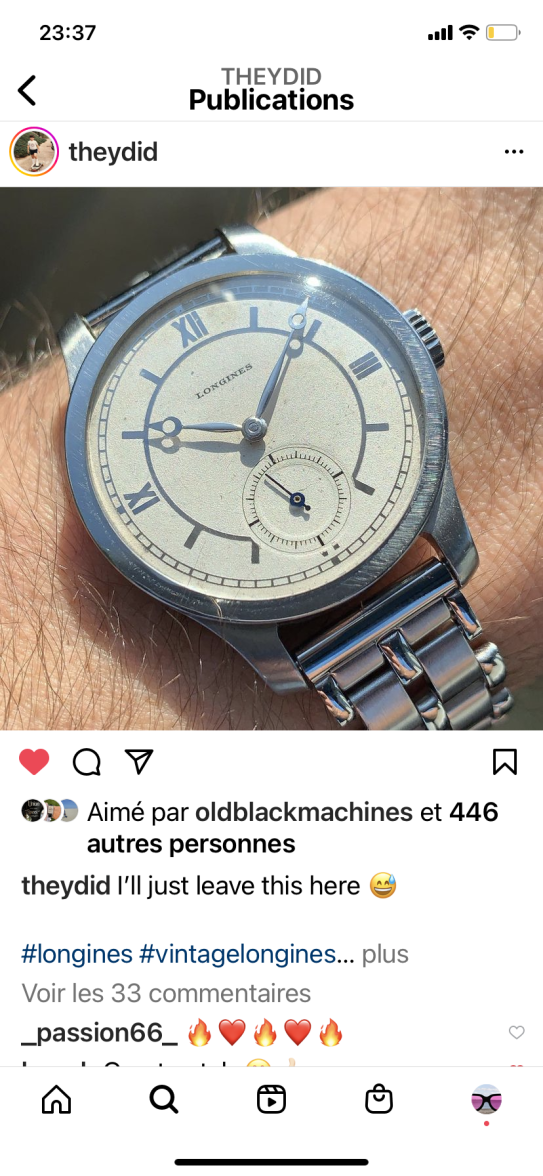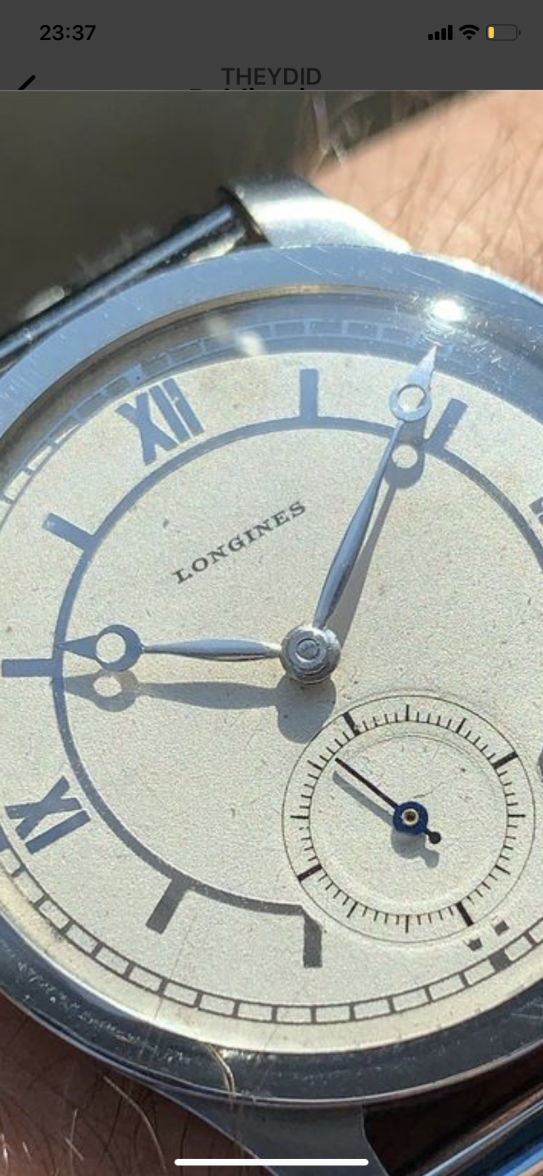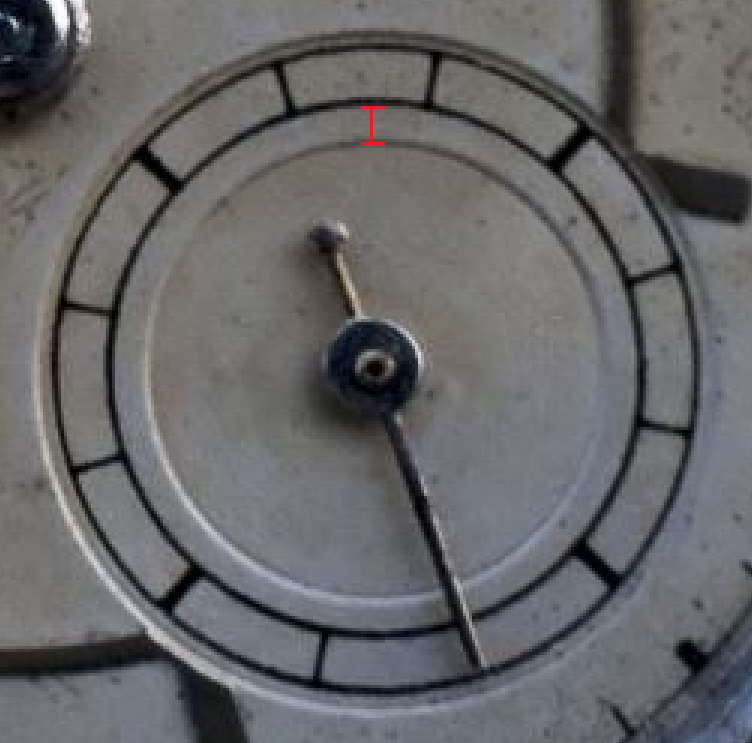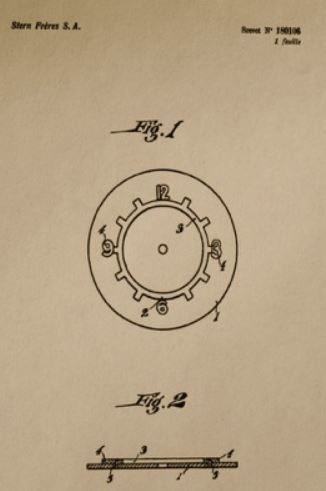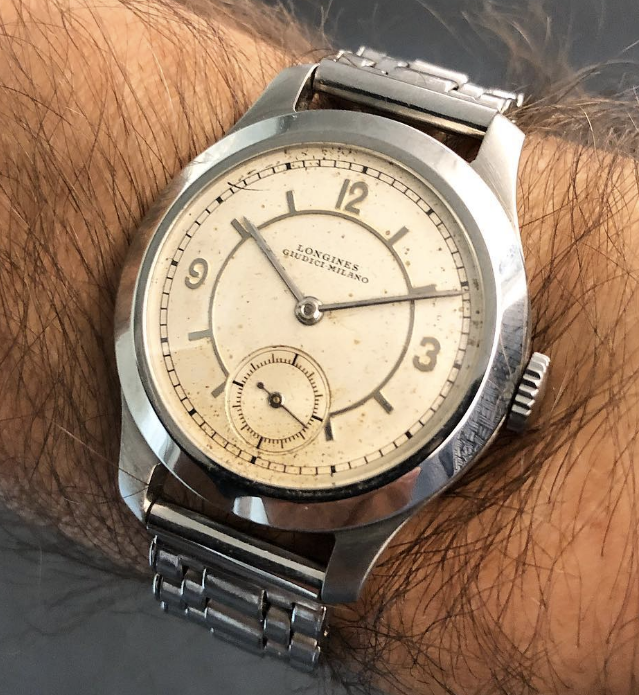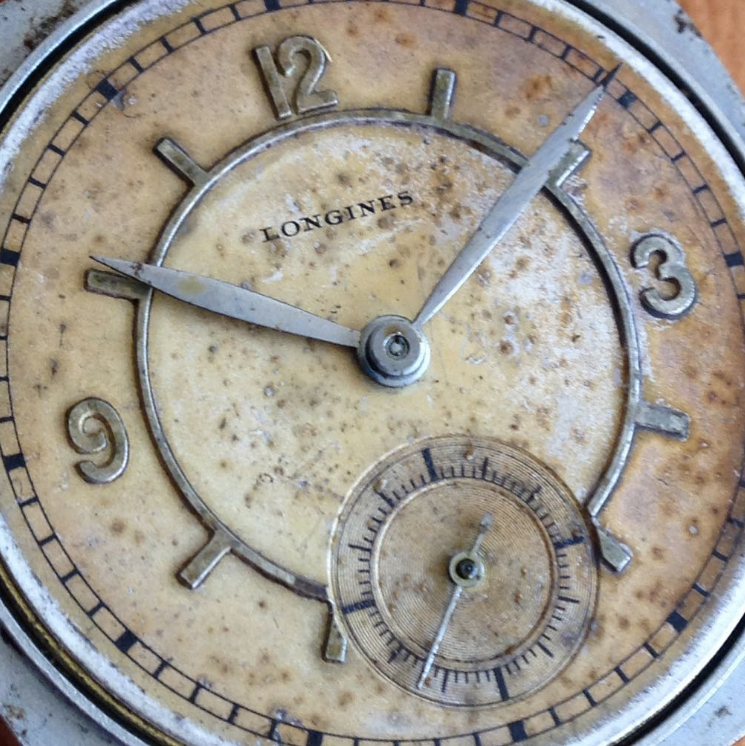Longines sector dial for sale
size11s
·DirtyDozen12
·They’re called IIRC aiguilles “a feuilles revidees” which essentially means “hollowed leaf” hands.
Below one of mine.
Syrte
·To me, the sub-dial and signature look good. I find the edges of the sub-dial difficult to assess based on the photo available. As for the white and grainy texture, this does appear on some dials from the period. Here is one of mine:
The third example you posted is a picture from Adriano Davidoni’s website (but which he credited to someone else) and those soft edges I must admit have puzzled me, but I’ve seen another similar example- unless of course it wss the same watch which has changed hands, which is quite possible too.
DirtyDozen12
·I like the descriptive romance of the name "hollowed leaf"
Thank you for sharing that example, it is fabulous. It is great to see another example with a "proper" sector dial, a double-sunk sub-dial, and the a feuilles revidees hands. The font of the numerals looks the same as a couple of examples that I posted. I wonder if you know where and when it was invoiced? Maybe it went to the UK? Also, I wonder if it has a caliber 12.68Z?
size11s
·Hi DD12 and thank you. Yes, you are right, Baume, 12.68Z, 1937. I did contact Longines, see below. It's such a good case too with the swing lugs, screw on case back and bezel, it survives better in stainless steel than in silver I think.
The original serial number 5'505'952 identifies a wristwatch in stainless steel. It is fitted with a Longines manually wound mechanical movement, caliber 12.68Z and was invoiced on 16 October 1937 to the company Baume, which was at that time our agent for the United Kingdom.
The original serial number 5'505'952 identifies a wristwatch in stainless steel. It is fitted with a Longines manually wound mechanical movement, caliber 12.68Z and was invoiced on 16 October 1937 to the company Baume, which was at that time our agent for the United Kingdom.
DirtyDozen12
·Hi DD12 and thank you. Yes, you are right, Baume, 12.68Z, 1937. I did contact Longines, see below. It's such a good case too with the swing lugs, screw on case back and bezel, it survives better in stainless steel than in silver I think.
The original serial number 5'505'952 identifies a wristwatch in stainless steel. It is fitted with a Longines manually wound mechanical movement, caliber 12.68Z and was invoiced on 16 October 1937 to the company Baume, which was at that time our agent for the United Kingdom.
Dan S
·DirtyDozen12
·You’ll note the edges on this subdial are comparable to the edges on the OP watch- yet I don’t think there’s a debate your dial is original, and personally I have no problem with the subdial on the OP watch.
The third example you posted is a picture from Adriano Davidoni’s website (but which he credited to someone else) and those soft edges I must admit have puzzled me, but I’ve seen another similar example- unless of course it wss the same watch which has changed hands, which is quite possible too.
DirtyDozen12
·You’ll note the edges on this subdial are comparable to the edges on the OP watch- yet I don’t think there’s a debate your dial is original, and personally I have no problem with the subdial on the OP watch.
DirtyDozen12
·Back to the design of the sub-dial, below is a comparison with a watch that I posted in 2017 here: https://omegaforums.net/threads/another-balaclava-1930s-longines.54610/ At the time, I questioned the sub-dial design. Now, I think that the dial is probably original. It is interesting to note that the gap, which @Modest_Proposal highlighted on the left dial, is quite a bit smaller on the right dial. Also, the twelve lines of the sub-dial look to be of the same thickness.
Modest_Proposal
·Back to the design of the sub-dial, below is a comparison with a watch that I posted in 2017 here: https://omegaforums.net/threads/another-balaclava-1930s-longines.54610/ At the time, I questioned the sub-dial design. Now, I think that the dial is probably original. It is interesting to note that the gap, which @Modest_Proposal highlighted on the left dial, is quite a bit smaller on the right dial. Also, the twelve lines of the sub-dial look to be of the same thickness.
An interesting find. It gives me pause...
Tony C.
··Ωf Jury memberFWIW, here is a watch shown in an interview with Jack Wong. Obvious similarities, and it is interesting to note that there appears to be a gap around the sub-dial like that of the watch in question. Having said that, it has, like most, of not all of the others shown, a serif signature, which raises doubts about the subject watch.
As to the thicker 3, 6, 9, 12 sub-dial indices, I don't consider them suspicious, given how often they were employed on other sector references of the period. However, it is not common to find that type of minimalist register, as opposed to the much more typical full, 60 second style.
source: https://revolutionwatch.com/the-collector-jack-wong/
As to the thicker 3, 6, 9, 12 sub-dial indices, I don't consider them suspicious, given how often they were employed on other sector references of the period. However, it is not common to find that type of minimalist register, as opposed to the much more typical full, 60 second style.
source: https://revolutionwatch.com/the-collector-jack-wong/
Syrte
·To linger on the topic of sub-dial edge sharpness and originality, I think we both agree that original dials usually have sharp sub-dial edges. I think we also agree that the dial in question has pretty sharp edges. Following from that, one question that arises is, are there redials with sharp edges? I think that the answer is yes. Below is an example of a disclosed redial found here: https://www.lorologiese.com/en/home...4-sector-dial-1951-steel-watch-cal-1268z.html
In all fairness, this is like comparing apples to oranges.
If the OP dial were repainted in part (which I’m not convinced about), it would have to have happened decades ago
considering the patina of the dial is completely consistent with the condition of the hands and movement.
The fact a top redialer in 2021 is capable of creating sharp subdial edges doesn’t mean that’s how redials were done 70 years or 80 years ago.
So the notion that “redials can have sharp edges” cannot be based on such an example if we’re discussing a dial from another period altogether, instead of a brand new and high quality repaint job.
Syrte
·I should also mention why I’m not convinced this dial is repainted:
- the edges of the raised numerals and raised semi circular index are completely free of paint, and those indexes are crisp and clean, whereas repainted dials with raised numerals typically have paint creeping up the sides of the raised parts;
- the subdial to my eyes looks completely fine compared to some other similar Longines subdials of the era in terms of quality, crispness of print and sharpness of the edges;
- the dial patina is completely consistent with the overall condition of the watch, the hands, the movement and the case.
Upon a closer look the Longines signature does deserve a more precise high resolution picture, but at first blush it didn’t strike me as obviously wrong even though unusual for a men’s watch of the era.
That being said, and in doubt, prospective buyers could seek a guarantee of originality and reserve the possibility of an inspection.
And finally, below is the other occurrence I found of the dial type @DirtyDozen12 posted above. If it’s the same dial it sure got a good clean somehow in the meantime— I’m a bit skeptical Private eyes would have taken the chance as they sold the watch to Kevin O’Dell.
- the edges of the raised numerals and raised semi circular index are completely free of paint, and those indexes are crisp and clean, whereas repainted dials with raised numerals typically have paint creeping up the sides of the raised parts;
- the subdial to my eyes looks completely fine compared to some other similar Longines subdials of the era in terms of quality, crispness of print and sharpness of the edges;
- the dial patina is completely consistent with the overall condition of the watch, the hands, the movement and the case.
Upon a closer look the Longines signature does deserve a more precise high resolution picture, but at first blush it didn’t strike me as obviously wrong even though unusual for a men’s watch of the era.
That being said, and in doubt, prospective buyers could seek a guarantee of originality and reserve the possibility of an inspection.
And finally, below is the other occurrence I found of the dial type @DirtyDozen12 posted above. If it’s the same dial it sure got a good clean somehow in the meantime— I’m a bit skeptical Private eyes would have taken the chance as they sold the watch to Kevin O’Dell.
Edited:
DirtyDozen12
·Obvious similarities, and it is interesting to note that there appears to be a gap around the sub-dial like that of the watch in question.
Tony C.
··Ωf Jury memberJust to clarify, I believe that the gap that was mentioned by @Modest_Proposal was this one:
Thanks – my mistake.
DirtyDozen12
·The fact a top redialer in 2021 is capable of creating sharp subdial edges doesn’t mean that’s how redials were done 70 years or 80 years ago.
So the notion that “redials can have sharp edges” cannot be based on such an example if we’re discussing a dial from another period altogether, instead of a brand new and high quality repaint job.
Photo on the left: http://www.exoticwatches.net/all-watches-2/1940s-very-rare-13zn-flyback-18k-longines-chronograph/
Photo on the right: https://www.phillips.com/detail/longines/CH080319/25
DirtyDozen12
·Adding a few more images for posterity.
http://watchexpertise.com/oldlonginespassion/Longines_Passion/Quadranti_a_settori.html
https://www.instagram.com/p/BtnqSgmHcxo/
https://www.instagram.com/p/BSo-FnZBzeN/
https://www.instagram.com/p/BLd0gERDT_K/
https://www.instagram.com/p/BdFZAUPnywQ/
https://www.instagram.com/p/Bnm-TL1H64u/
http://watchexpertise.com/oldlonginespassion/Longines_Passion/Quadranti_a_settori.html
https://www.instagram.com/p/BtnqSgmHcxo/
https://www.instagram.com/p/BSo-FnZBzeN/
https://www.instagram.com/p/BLd0gERDT_K/
https://www.instagram.com/p/BdFZAUPnywQ/
https://www.instagram.com/p/Bnm-TL1H64u/
